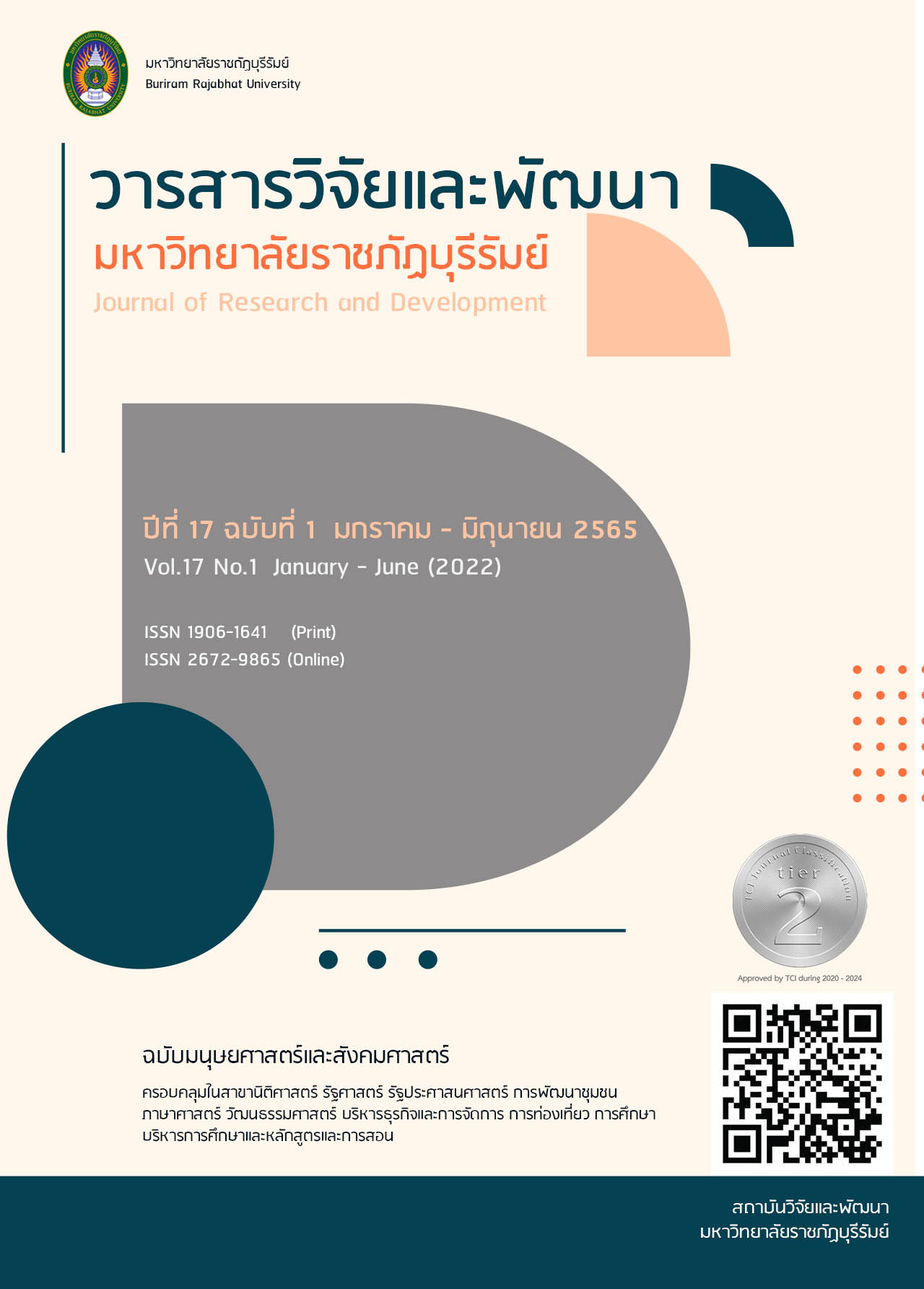การจัดการนวัตกรรมเชิงสร้างสรรค์ของโรงพยาบาลเอกชน เพื่อความเป็นเลิศด้านนวัตกรรมและผลการดำเนินงานขององค์การ
Main Article Content
บทคัดย่อ
การศึกษาครั้งนี้มีวัตถุประสงค์เพื่อ (1) ศึกษาการจัดการนวัตกรรมเชิงสร้างสรรค์ของโรงพยาบาลเอกชน เพื่อความเป็นเลิศด้านนวัตกรรมและผลการดำเนินงานขององค์การ (2) เพื่อศึกษาปัจจัยเชิงสาเหตุของการจัดการนวัตกรรมเชิงสร้างสรรค์ของโรงพยาบาลเอกชน เพื่อความเป็นเลิศด้านนวัตกรรมและผลการดำเนินงานขององค์การ (3) เพื่อศึกษาผลกระทบของการจัดการนวัตกรรมเชิงสร้างสรรค์ของโรงพยาบาลเอกชน เพื่อความเป็นเลิศด้านนวัตกรรมและผลการดำเนินงานขององค์การ งานวิจัยนี้เป็นงานวิจัยเชิงปริมาณ โดยประชากรสำหรับการวิจัยครั้งนี้ คือ ธุรกิจโรงพยาบาลเอกชนในประเทศไทย จำนวน 347 แห่ง ได้รับแบบสอบถามที่สมบูรณ์กลับคืนมาทั้งหมด 269 ชุด งานวิจัยนี้ใช้การวิเคราะห์ข้อมูลโดยใช้สถิติพรรณนา (Descriptive Statistic) ในการบรรยายลักษณะของข้อมูล และใช้การวิเคราะห์โมเดลสมการโครงสร้าง (Structural Equation Modeling: SEM) ในการทดสอบเงื่อนไขพื้นฐาน และใช้การวิเคราะห์องค์ประกอบเชิงยืนยันในการทดสอบสมมติฐาน จากการทดสอบสมมติฐานพบว่า การจัดการนวัตกรรมเชิงสร้างสรรค์ของโรงพยาบาลเอกชน ส่งผลต่อความเป็นเลิศด้านนวัตกรรมและผลการดำเนินงานอย่างมีนัยสำคัญทางสถิติที่ 0.05
Article Details

อนุญาตภายใต้เงื่อนไข Creative Commons Attribution-NonCommercial-NoDerivatives 4.0 International License.
เนื่อหาและข้อมูลในบทความ เป็นความรับผิดชอบของผุ้แต่ง
บทความในวารสารเป็นลิขสิทธิ์ของวารสารวิจัยและนวัตกรรมท้องถิ่น
เอกสารอ้างอิง
กัลยา วานิชย์บัญชา. (2545). หลักสถิติ (พิมพ์ครั้งที่ 7). กรุงเทพฯ: โรงพิมพ์แห่งจุฬาลงกรณ์ มหาวิทยาลัย.
กระทรวงเทคโนโลยีสารสนเทศและการสื่อสาร. (2559). แผนพัฒนาดิจิทัลเพื่อเศรษฐกิจและสังคม. กรุงเทพมหานคร: กระทรวงเทคโนโลยีสารสนเทศและการสื่อสาร.
จักรพันธ์ กิตตินรรัตน์ และ อรณัฏฐ์ นครศรี. (2560). ปัจจัยที่ส่งผลต่อความภักดีของลูกค้าต่อโรงพยาบาลเอกชนในเขตกรุงเทพมหานคร. วารสารเศรษฐศาสตร์และกลยุทธ์การจัดการ ,ปีที่ 4 ฉบับที่ 2.
เยาวภา ปฐมศิริกุล. (2552). กลยุทธ์การตลาด บริการสุขภาพของโรงพยาบาลเอกชนใน ประเทศไทย. วิทยานิพนธ์ปริญญาดุษฎี บัณฑิต. มหาวิทยาลัยอีสเทิร์นเอเชีย.
สำนักงานสถิติแห่งชาติ. (2560). สรุปผลเบื้องต้นการสำรวจโรงพยาบาลและสถานพยาบาลเอกชน พ.ศ.2560. สืบค้นเมื่อ 22 กุมภาพันธ์ 2562. สืบค้นจาก : http://www.nso.go.th/ sites/2014/DocLib13/ด้านสังคม/สาขาสุขภาพ/โรงพยาบาลและสถานพยาบาลเอกชน/2560/hospital60.pdf.
รุ่งโรจน์ สงสระบุญ. (2559). ปัจจัยที่มีอิทธิพลต่อการดาเนินงานของโรงพยาบาลเอกชนในประเทศไทย. วารสารวิชาการมหาวิทยาลัยธนบุรี. ปีที่ 10 ฉบับที่ 22 เดือนพฤษภาคม – สิงหาคม, หน้า 80-88.
Aaker, D. A., Kumar, V., & Day, G. S. (2001). Marketing Research. New York: John Wiley and Sons.
Alisha, L. H., Cooper. (2010). Innovation. Health Information Management Journal, 39(1).
Amabile, T. M. (1996). Creativity in context: Update to the social psychology of creativity. Hachette UK.
Bass, B.M. & Avolio, B.J., (1994). Improving Organization Effectiveness Through Transformational Leadership. (Thousand Oak: Sage).
Bateman, T. S., & Crant, J. M. (1993). The proactive component of organizational behavior: A measure and correlates. Journal of organizational behavior, 14(2), 103-118.
Cronbach, L. J. (1984). A research worker's treasure chest. Multivariate behavioral research, 19(2-3), 223-240.
Florida, R (2002). The raise ofcreative class. New York : Basic Books.
Hair, J. F., Black, B., Babin, B., Anderson, R. E., & Tatha, R. L. (2006). Multivariate Data Analysis (6th ed.). Upper Saddle River, N. J.: Pearson Prentice Hall.
Harrington, S. J. (2006). Hospital organization culture, capacity to innovate and success in technology adoption. Journal of Health Organization and Management, 20(3), 194-217.
Howkins, J. (2002). The creative economy: How people make money from ideas. Penguin UK.
Michaelsen, J. J., Krasnik, A., Nielsen, A. S., Norredam, M., & Torres, A. M. (2004). Health professionals' knowledge, attitudes, and experiences in relation to immigrant patients: a questionnaire study at a Danish hospital. Scandinavian journal of public health, 32(4), 287-295.
Nisula, A. M. (2013). Building organizational creativity–a multitheory and multilevel approach for understanding and stimulating organizational creativity.
Porter, M. E. (1980). Competitive strategy: Techniques for analyzing industries and competitors.New York: Free Press.
Satsanguan, L., Fongsuwan, W., & Trimetsoontorn, J (2015). Structural equation modelling of service quality and corporate image that affect customer satisfaction in private nursing homes in the bangkok Metropolitan Region. Research Journal of Business Management, 9(1): 68-69.
Talke, K. (2007). How a corporate mindset drives product innovativeness. Innovation Orientation, Innovativeness and Innovation Success, Zeitschrift für Betriebswissenschaft, Sonderheft, 2, 45-68.
Tsoukas, H., & Chia, R. (2002). On organizational becoming: Rethinking organizational change. Organization science, 13(5), 567-582.
Wibulpolprasert, S., & Pengpaibon, P. (2003). Integrated strategies to tackle the inequitable distribution of doctors in Thailand: four decades of experience. Human resources for health, 1(1), 12.
Woodman, R. W., Sawyer, J. E., & Griffin, R. W. (1993). Toward a theory of organizational creativity. Academy of management review, 18(2), 293-321.
Valtakoski, A., & Järvi, K. (2016). Productization of knowledge-intensive services: Enabling knowledge sharing and cross-unit collaboration. Journal of Service Management, 27(3), 360-390.
Mendonça, V., Varajão, J., & Oliveira, P. (2015). Cooperation networks in the tourism sector: multiplication of business opportunities. Procedia Computer Science, 64, 1172-1181.
Anning-Dorson, T. (2016). Interactivity innovations, competitive intensity, customer demand and performance. International Journal of Quality and Service Sciences.
Birasnav, M., (2014). Knowledge Management and Organizational Performance in the Service Industry: The Role of Transformational Leadership Beyond the Effects of Transactional Leadership. Journal of Business Research 67: 1622–1629.
Preiss, K., Goldman, S. L., & Nagel, R. N. (1995). Agile Competitiors and Virtual Organizations. Strategies for enriching the customer.


